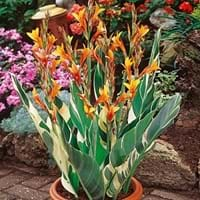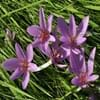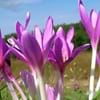Life Span
Perennial
Perennial
Type
Bulb or Corm or Tuber
Tree
Origin
Latin America and the Caribbean, Central America, South America
North America, United States, Northeastern United States, Mid-Atlantic United States, Southeastern United States, North-Central United States, Central United States, South-Central United States, Canada
Types
Canna Altensteinii, Canna Indica Purpurea
Autumn Flame, October Brilliance, Tiliford
Number of Varieties
Not Available
Habitat
Subtropical climates, Tropical regions, Warmer regions
Forests, Wide range of ecological site
USDA Hardiness Zone
8-11
3-9
Sunset Zone
21,22
A2, A3, 1a, 1b, 2a, 2b, 3a, 3b, 4, 5, 6, 7, 8, 9, 14, 15, 16, 17
Habit
Upright/Erect
Oval or Rounded
Minimum Height
Not Available
Minimum Width
Not Available
Flower Color
White, Yellow, Red, Orange, Pink, Rose, Salmon
Red
Flower Color Modifier
Bicolor
Bicolor
Fruit Color
Green, Tan, Brown
Red, Green, Brown
Leaf Color in Spring
Yellow, Red, Green, Purple, Gray Green, Dark Green, Burgundy
Light Green
Leaf Color in Summer
Light Green
Green, Dark Green
Leaf Color in Fall
Several shades of Green
Yellow, Red, Orange, Yellow green, Gold, Dark Red, Orange Red
Leaf Color in Winter
Light Green
Not Available
Leaf Shape
Elliptic
Maple shaped
Plant Season
Spring, Summer, Fall
Spring, Summer, Fall
Sunlight
Full Sun, Partial Sun
Full Sun, Partial Sun
Type of Soil
Clay, Loam, Sand
Clay, Loam, Sand
The pH of Soil
Acidic, Neutral, Alkaline
Acidic, Neutral, Alkaline
Soil Drainage
Average
Average
Bloom Time
Indeterminate
Early Spring, Spring
Tolerances
Drought
Wet Site, Soil Compaction
Where to Plant?
Container, Ground, Pot
Ground
How to Plant?
From bulbs, Seedlings
Seedlings, Vegetative Reproduction
Plant Maintenance
Medium
Medium
Watering Requirements
Keep the ground moist but not water-logged, Requires regular watering
Water Deeply, Water when top layer of soil becomes dry
In Summer
Lots of watering
Lots of watering
In Spring
Moderate
Moderate
In Winter
Average Water
Average Water
Soil pH
Acidic, Neutral, Alkaline
Acidic, Neutral, Alkaline
Soil Type
Clay, Loam, Sand
Clay, Loam, Sand
Soil Drainage Capacity
Average
Average
Sun Exposure
Full Sun, Partial Sun
Full Sun, Partial Sun
Pruning
Remove damaged leaves, Remove dead leaves
Remove dead branches, Remove dead leaves
Fertilizers
All-Purpose Liquid Fertilizer
General garden fertilizer, No need to fertilize every year
Pests and Diseases
Red blotch
Anthracnose, Bleeding canker, Decline, Fomes root rot, Ganoderma root rot, Laetiporus root rot, Leaf spot, Powdery mildew, Tar spot, Verticillium Wilt
Plant Tolerance
Drought
Soil Compaction, Wet Site
Flowers
Showy
Insignificant
Flower Petal Number
Single
Single
Foliage Texture
Bold
Medium
Foliage Sheen
Not Available
Matte
Attracts
Butterflies, Insects
Not Available
Allergy
Not Available
breathing problems, Eczema, flushing of face, Hives, Low blood pressure, Oral cavity, Rapid Heartbeat, Runny nose, Watery eyes
Aesthetic Uses
Beautification, Bouquets, Landscape Designing, Showy Purposes
Showy Purposes
Beauty Benefits
Not Available
Not Available
Environmental Uses
Air purification
Air purification, Wildlife
Medicinal Uses
Diuretic
Not Available
Part of Plant Used
Flowers, Leaves, Root, Seeds
Whole plant
Other Uses
Decoration Purposes, Showy Purposes, Used As Food, Used as Ornamental plant, Used in paper industry
Edible syrup, Used as Ornamental plant
Used As Indoor Plant
Yes
Yes
Used As Outdoor Plant
Yes
Yes
Garden Design
Bedding Plant, Container, Feature Plant, Foundation, Mixed Border, Tropical, Water Gardens
Feature Plant, Shade Trees, Street Trees
Botanical Name
CANNA
ACER rubrum
Common Name
Canna, Canna Lily
Northern Red Maple, Red Maple
In Hindi
भंग लिली
लाल मेपल के पेड़
In German
Canna Lilie
Red Maple Tree
In French
Canna
Red Maple Tree
In Spanish
Canna lirio
Árbol de arce rojo
In Greek
Canna κρίνος
Red Maple Tree
In Portuguese
Canna
Árvore de bordo vermelho
In Polish
Canna lilia
Red Maple Tree
In Latin
Canna lilium
Rubrum Maple ligno
Phylum
Embryophyta
Magnoliophyta
Class
Liliopsida
Magnoliopsida
Order
Zingiberales
Sapindales
Family
Cannaceae
Aceraceae
Clade
Angiosperms, Commelinids, Monocots
Angiosperms, Eudicots, Rosids
Tribe
Not Available
Not Available
Subfamily
Not Available
Not Available
Number of Species
Not Available
Importance of Canna and Red Maple Tree
Want to have the most appropriate plant for your garden? You might want to know the importance of Canna and Red Maple Tree. Basically, these two plants vary in many aspects. Compare Canna and Red Maple Tree as they differ in many characteristics such as their life, care, benefits, facts, etc. Every gardener must at least have the slightest clue about the plants he wants to plant in his garden. Compare their benefits, which differ in many ways like facts and uses. The medicinal use of Canna is Diuretic whereas of Red Maple Tree is Not Available. Canna has beauty benefits as follows: Not Available while Red Maple Tree has beauty benefits as follows: Not Available.
Compare Facts of Canna vs Red Maple Tree
How to choose the best garden plant for your garden depending upon its facts? Here garden plant comparison will help you to solve this query. Compare the facts of Canna vs Red Maple Tree and know which one to choose. As garden plants have benefits and other uses, allergy is also a major drawback of plants for some people. Allergic reactions of Canna are Not Available whereas of Red Maple Tree have breathing problems, Eczema, flushing of face, Hives, Low blood pressure, Oral cavity, Rapid Heartbeat, Runny nose and Watery eyes respectively. Having a fruit bearing plant in your garden can be a plus point of your garden. Canna has no showy fruits and Red Maple Tree has no showy fruits. Also Canna is not flowering and Red Maple Tree is not flowering . You can compare Canna and Red Maple Tree facts and facts of other plants too.





